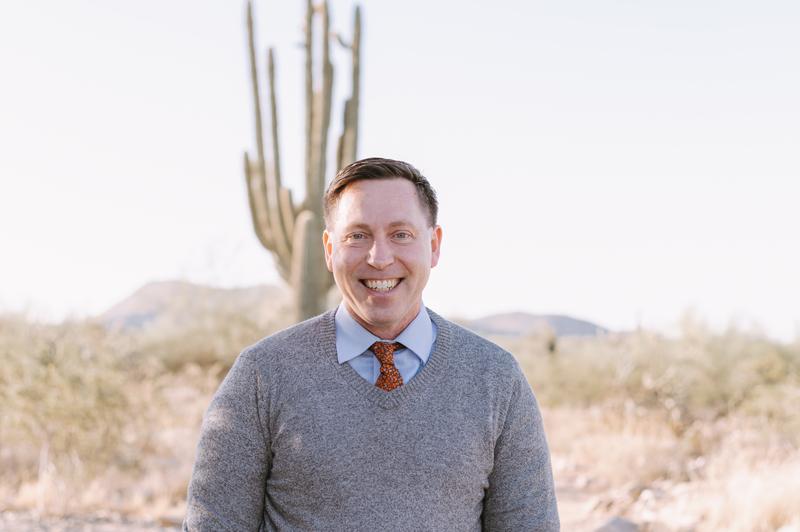-
About
- Departments & Offices
-
Academics
- Physician Assistant
- Special Master’s (MBS)
-
Admissions & Financial Aid
- Tuition & Fees
-
Student Experience
-
- Student Resources by Program
- Academic & Student Support
- Wellness & Wellbeing
- Student Life
- Events & Traditions
-
-
Research
- Research Labs & Centers
-
Local & Global Engagement
- Global Health Programs
- Community Engagement
Faculty Spotlight: Benjamin Stern
"I suppose at the end of the day I believe that helping someone introduce regular, structured physical activity into their lifestyle...can be an extremely positive and potentially life-changing intervention."

Our DPT faculty are dedicated to make our students experience the best possible. Get to know our faculty members in the DPT Phoenix program—meet Benjamin Stern, assistant professor in the Department of Rehabilitation Sciences.
Why did you choose to become a Doctor of Physical Therapy?
"I believe that participating in regular, structured physical activity has a meaningful, positive influence on a huge number of health-related factors. I was a very active kid and played tennis, soccer, baseball, and football. Education was very important in my family, and we were taught to be inquisitive. When I was finishing my master’s degree in exercise science my dad, mom, and stepmother were all professors at different universities. Like a lot of young adults, I wanted to do my own thing and I was definitely NOT going to become a professor like my parents, so I decided I was going to pursue a professional degree. The relationship between health and physical activity was a rich and super interesting area for me. Leveraging the knowledge in research and exercise science I already had and building on that foundation in a DPT program provided an incredible amount of additional insight into the health-physical activity relationship, including how that relationship is affected by disease, culture, and socioeconomic factors. I’ve been lucky to have extraordinary people in my life as mentors. They’ve been physicians, physical therapists, researchers, librarians, teachers, friends, and family and each has influenced my decision to become a physical therapist. I suppose at the end of the day I believe that helping someone introduce regular, structured physical activity into their lifestyle—through an individualized plan that fits that individual's unique needs—can be an extremely positive and potentially life-changing intervention."
What are your areas of research and why did you pick them?
"Coming out of school, I was interested in treatment effectiveness, and diagnostic accuracy. I spent some of my spare time at the Center for Cost and Outcomes Research at the University of Washington, where I was lucky enough to find a mentor in Dr. Rick Deyo, MD, MPH. For the past 5+ years, my research has revolved around exploring a dynamical systems approach to studying non-contact injuries. By viewing injury resilience as a system made up of a number of different parts working together, my ultimate goal is to devise practical strategies to control the collective dynamics (behavior) of the system, provide early warnings of potential failure and keep people healthy. To do this requires that we start by mapping out as many of the system details as we can from data. Using time-series data, we can employ techniques like delay-coordinate embedding and machine learning to reconstruct the dynamics and network structure of the system. When you plot it over time, nonlinear dynamics can be depicted by these beautiful, organic, unique flowing shapes, and I love this. By reconstructing the behavior and network of the system, hopefully, we can nudge people away from that tipping point beyond which the system collapses. I think the future's bright in this area. There is a growing repository of time-series data as wearable sensors have become ubiquitous, electronic medical records are logging more data and the beauty of a dynamical systems approach is that instead of a snapshot, we can view a movie of an individual's health over time."
What accomplishments are you most proud of?
"I am most proud of the friendships I have made and continue to make. I collaborate with researchers at a number of different universities and I value the relationships I've made with those folks, who are all much smarter than me. They are experts in fields like computer science, physics, ecology, etc., and they've allowed me a window through which to view the world as they view it. My research and approach to understanding my field has changed as a result of these collaborations."
Why did you choose to teach at Tufts?
"Tufts just feels like a wonderful, collaborative, inviting, and safe environment. This place values high-quality teaching as much as it does high-level research. In my brief experience here since January, Tufts has provided incredible amounts of opportunity to improve my ability to effectively communicate information or ideas to students. The staff here understand that many faculty have expertise in a niche area of their field but lack comparable proficiency in curriculum design or approaches to learning. Students learn in a variety of ways and there is no shortage of experts at Tufts who seem excited to share their knowledge of curriculum design, learning styles, equity, and inclusiveness to help make my time with students more impactful. The level and variety of research and funding opportunities available here and with partner institutions are incredible. And, given the student-centered approach at Tufts, this research is communicated to undergraduate and graduate students in a meaningful way."
What is a piece of advice you would like to share with Tufts DPT students?
"Your faculty are all brilliant and experts in their areas. They're also great people and here to support you. With regards to the course work—be a skeptic. Ask questions. We appreciate it and your questions will help both of us. Remember, faculty are also learning from you."
Related News: Check Out Ben Stern's Artificial Intelligence Education Integration
Department:
Rehabilitation Sciences
